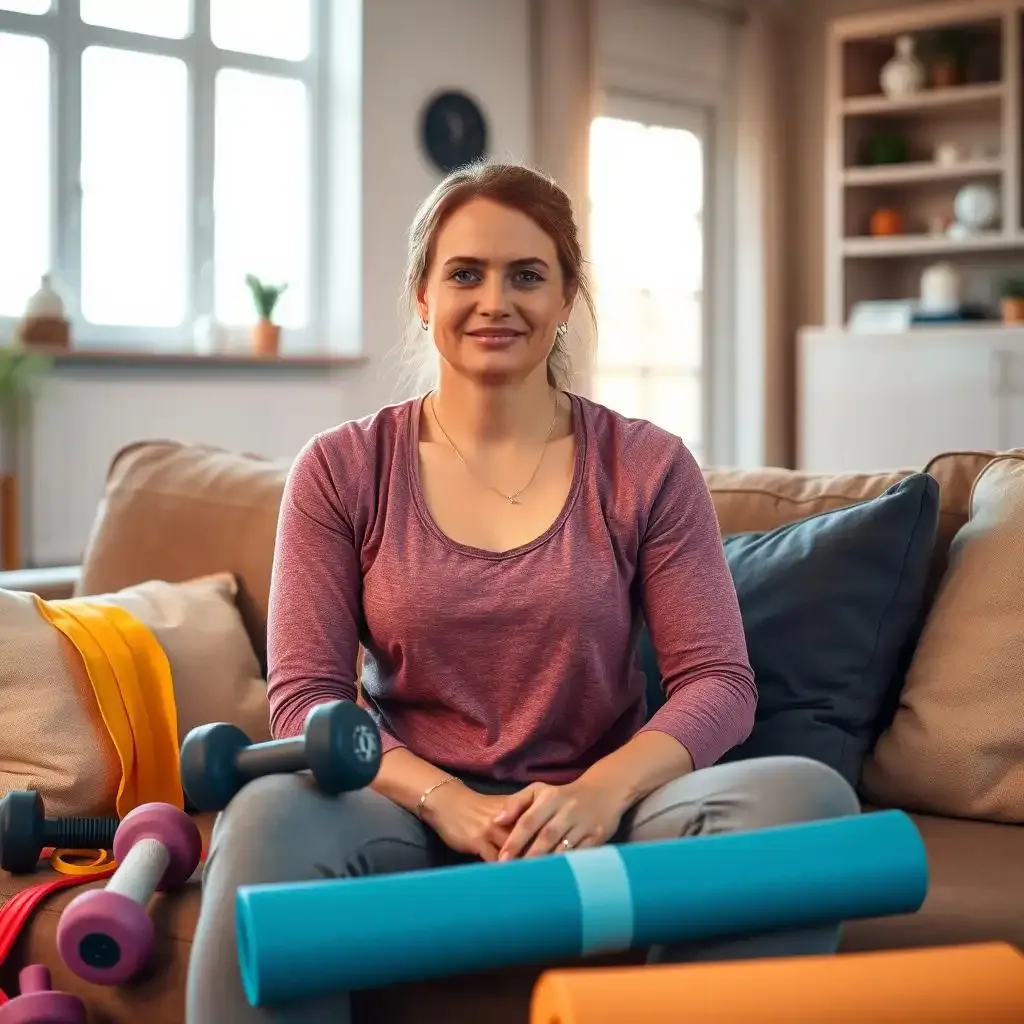Table of Contents
Starting a daily at-home workout routine has become more than just a trend - it's a practical solution for maintaining fitness in our busy lives. A well-structured home workout can rival gym sessions in effectiveness. Whether you're a busy parent, working professional, or simply prefer exercising in private, creating a daily at-home workout routine can help you achieve your fitness goals. Research shows that consistent home workouts can improve strength, boost metabolism, and enhance overall well-being. The key lies in understanding proper techniques, establishing a realistic schedule, and maintaining motivation. With minimal equipment and maximum dedication, you can transform any living space into your personal fitness sanctuary. This comprehensive guide will show you how to build, maintain, and progress in your home fitness process.
Aspect | Recommendation |
|---|---|
Workout Duration | 20-45 minutes daily |
Exercise Types | Mix of cardio, strength, and flexibility work |
Rest Periods | 30-60 seconds between exercises |
Equipment Needed | Minimal: mat, resistance bands, light weights (optional) |
Weekly Structure | 5 active days, 2 rest days |
1. Essential Components of a Daily AtHome Workout Routine
I've spent years perfecting my daily at-home workout routine, and I can tell you that getting started doesn't need to be complicated. Think of your workout routine like building with LEGO blocks - you start with the basics and add more pieces as you go. The foundation of any good includes three key parts: cardio exercises to get your heart pumping, strength training to build muscle, and flexibility work to keep you moving smoothly.
After trying countless workout combinations, I've found that mixing these elements creates the perfect balance. You'll want to start with a proper warm-up, just like how you wouldn't start driving a car without letting the engine warm up first. My experience shows that a can help you stay on track while building these healthy habits.
Component | Time | Benefits |
|---|---|---|
Warm-up | 5-10 minutes | Prevents injury, increases blood flow |
Cardio | 15-20 minutes | Burns calories, improves heart health |
Strength Training | 20-25 minutes | Builds muscle, boosts metabolism |
I've learned that scheduling your workouts is just as important as the exercises themselves. Just like how you wouldn't skip brushing your teeth, your should become a non-negotiable part of your day. The magic happens when you stick to it consistently.
- Start with 3-4 workouts per week
- Choose a specific time each day
- Pick exercises you actually enjoy
- Track your progress regularly
Space can be a concern, but I've discovered that you really only need about as much room as a yoga mat. Even in my tiny apartment, I managed to create an effective . The key is being creative with your space and choosing exercises that work within your limitations.
2. Creating Your Perfect Daily AtHome Workout Schedule
2 Creating Your Perfect Daily Athome Workout Schedule
Setting Up Your Weekly Plan
I started my fitness process by creating a that fits my life like a glove. Think of your schedule as a puzzle - you need to find the right pieces that fit your daily routine. I've found that working out first thing in the morning works best for me, but you might prefer evening sessions. The key is picking a time you can stick to consistently. When I began my , I learned that consistency beats intensity every time.
Time of Day | Pros | Cons |
|---|---|---|
Morning | Boosts energy, fewer distractions | Requires earlier wake-up |
Afternoon | Body temperature peaks | Work commitments may interfere |
Evening | Muscles are warmed up | May affect sleep |
Adjusting Your Workout Intensity
Let me share a secret I wish I knew when starting my - you don't need to go all-out every day. I mix high-intensity days with lighter sessions, just like a DJ mixes fast and slow songs. On Mondays and Wednesdays, I do intense cardio and strength training. Tuesdays and Thursdays are for lighter exercises like yoga or stretching. This approach has helped me stay consistent with my without burning out.
- Monday: High-intensity full body
- Tuesday: Light cardio and stretching
- Wednesday: Strength focus
- Thursday: Recovery exercises
- Friday: Mixed intensity
- Weekend: Active rest or light movement
3. Advanced Techniques for AtHome Workout Success
3 Advanced Techniques For Athome Workout Success
Progressive Overload at Home
I've discovered that making progress doesn't always need fancy gym equipment. When I started my , I learned to use household items creatively. Books in a backpack can add weight to squats, and stairs work great for increasing cardio intensity. The key is to gradually increase the challenge - just like leveling up in a video game. Each week, I add either more reps, sets, or resistance to keep my muscles guessing.
Exercise | Basic Version | Advanced Version |
|---|---|---|
Push-ups | Wall push-ups | One-arm push-ups |
Squats | Regular squats | Jump squats |
Planks | 30-second hold | 2-minute hold with leg lifts |
Time Under Tension Training
Let me share a game-changer I learned while following a . Slowing down your movements actually speeds up your results. I count to four on the way down and four on the way up for each exercise. This technique, called time under tension, makes even simple exercises feel like you're moving through thick honey - in a good way! My muscles work harder, and I see better results without adding any extra equipment.
- Slow push-ups: 4 seconds down, 4 seconds up
- Controlled squats: pause at the bottom for 2 seconds
- Extended plank holds: aim for 45-60 seconds
- Super-slow mountain climbers: 3 seconds per leg movement
Recovery and Adaptation Strategies
Through my , I've learned that rest days are like hitting the save button on your progress. I used to think more was always better, but now I know better. On rest days, I do light stretching or take a walk around the block. It's like giving your muscles a mini-vacation - they come back stronger and ready for action. My recovery routine includes 10 minutes of stretching and 5 minutes of deep breathing exercises. The results? Better flexibility, less soreness, and more consistent progress.
Empowering Your Fitness Process
Creating an effective daily at-home workout routine is about consistency and smart progression. Remember that the best workout routine is one that you can stick to regularly. Start with manageable goals, celebrate small victories, and gradually increase intensity as your fitness improves. Listen to your body, adjust exercises as needed, and stay committed to your schedule. With these tools and knowledge at your disposal, you're now equipped to take control of your fitness process from the comfort of your home. The ability to transform your health lies in the choices you make each day, so lace up those shoes and get moving.